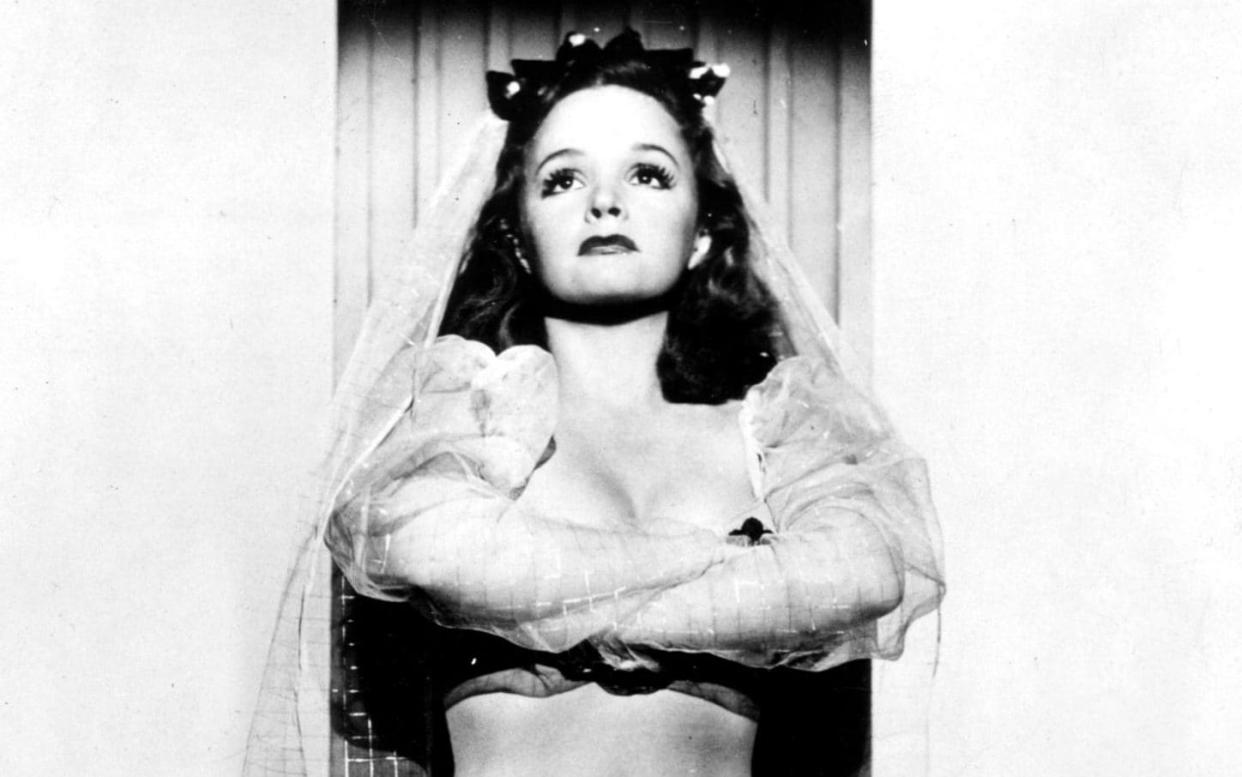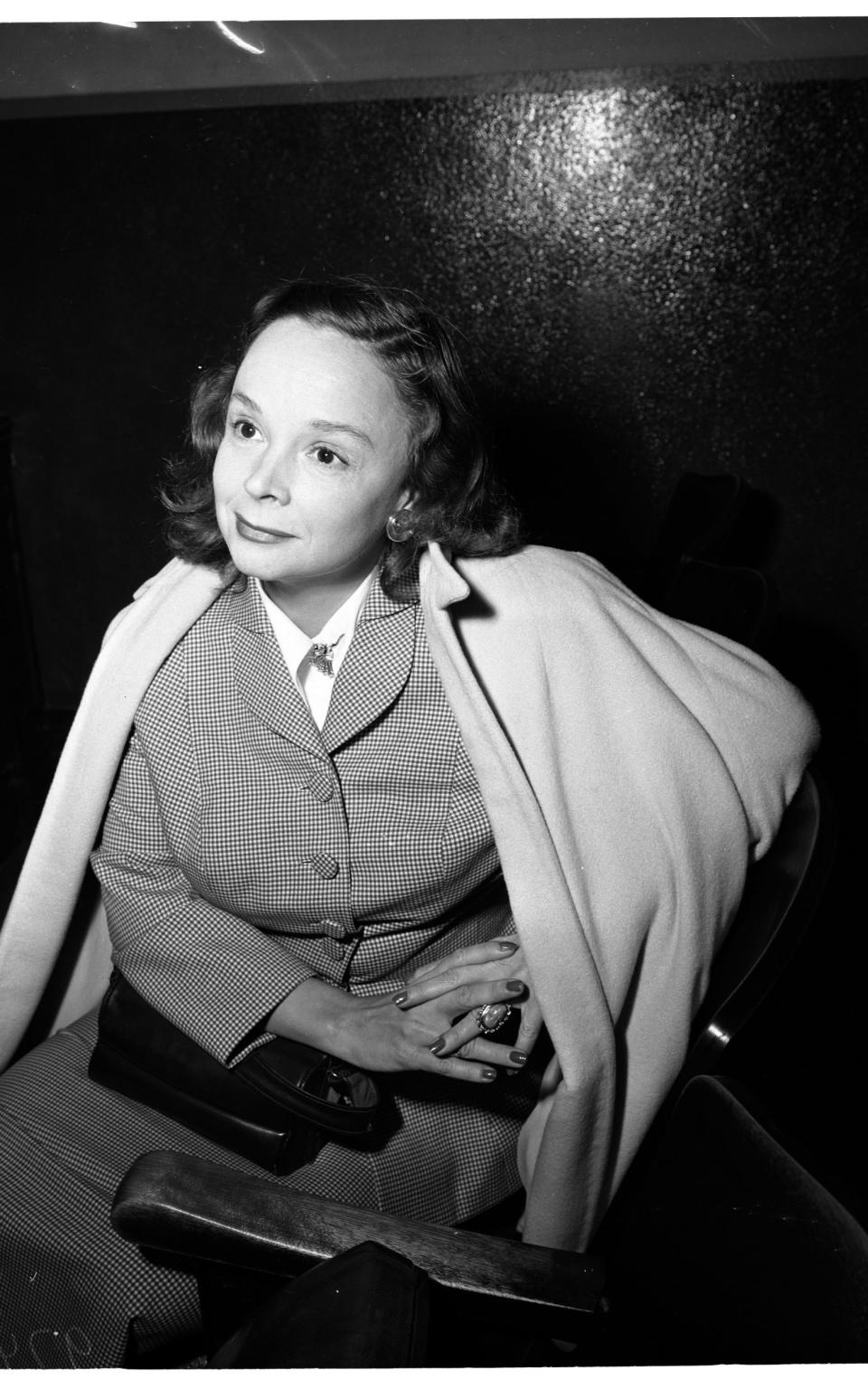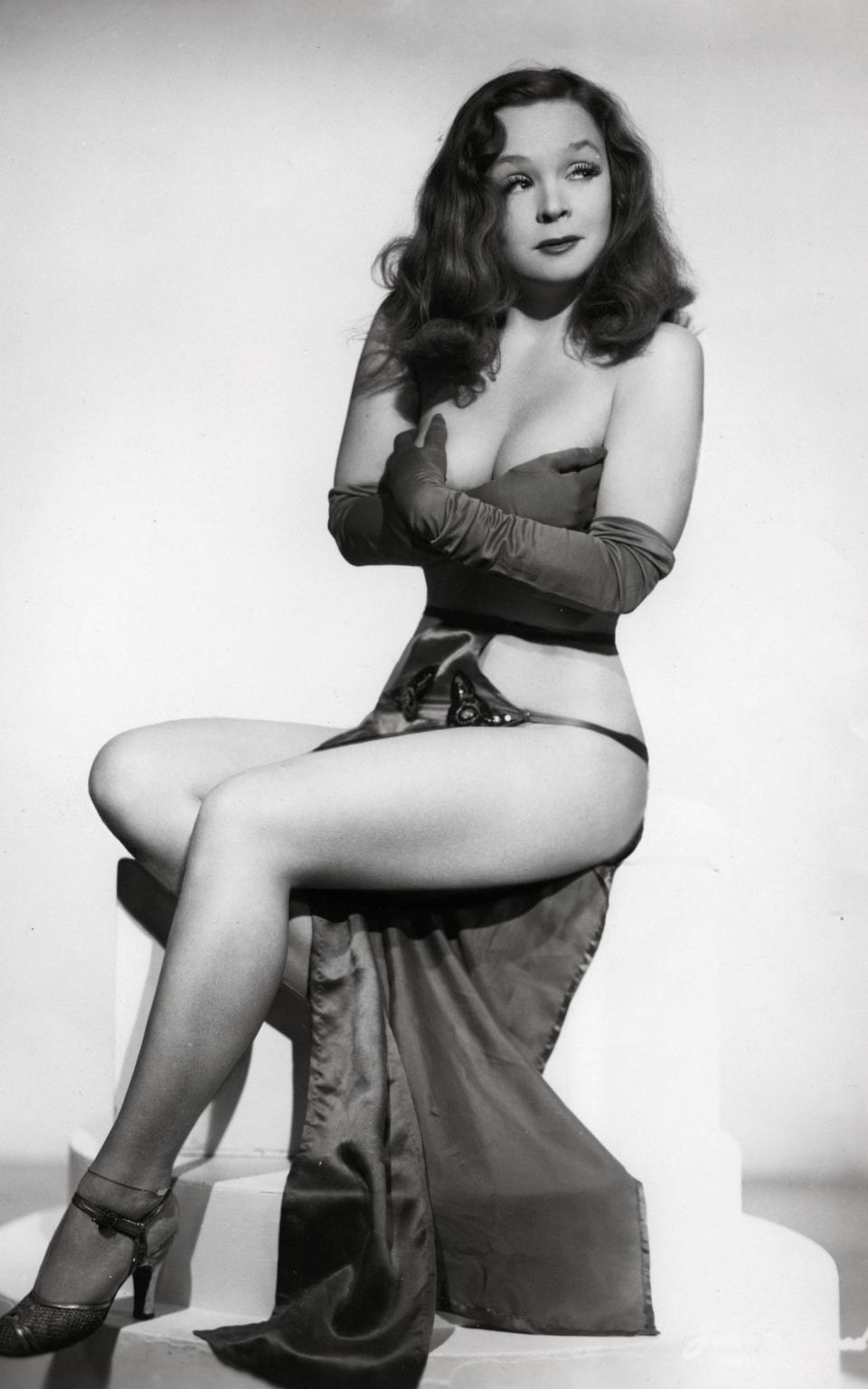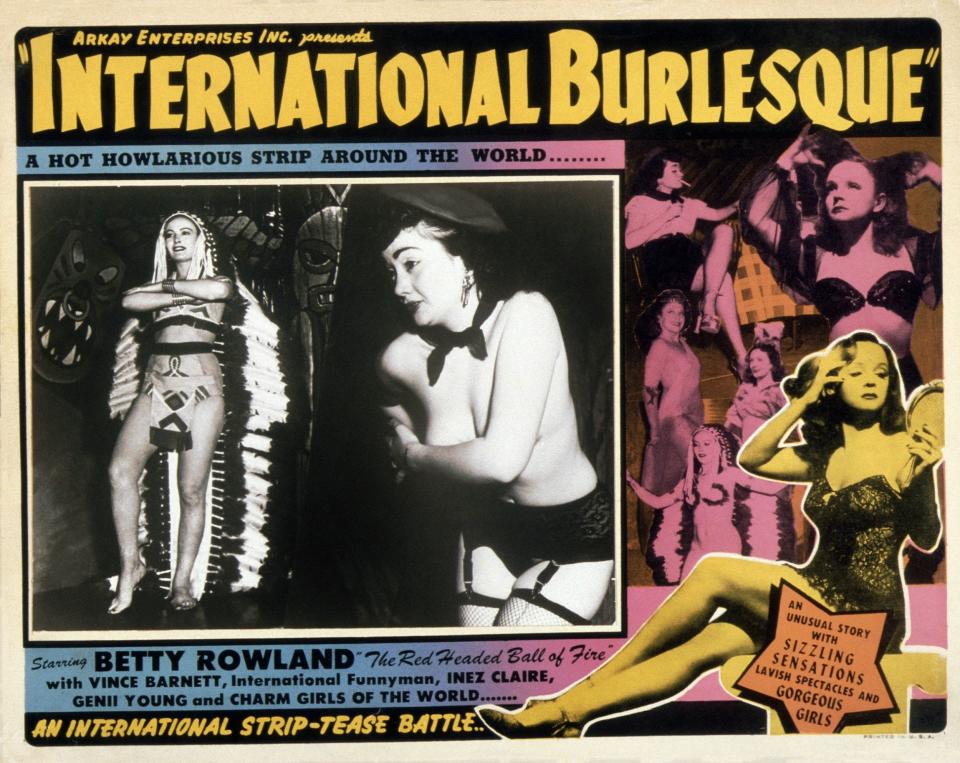Betty Rowland, burlesque artiste known as the ‘Ball of Fire’ – obituary

- Oops!Something went wrong.Please try again later.
- Oops!Something went wrong.Please try again later.
Betty Rowland, who has died aged 106, was a burlesque artist, an original Minsky’s Girl known as the “Ball of Fire”.
She lied about her age to get her first job aged 15, she recalled. “At first we kept our clothes on, but back then if a man found nickels and dimes to come and see a girl he wanted to see more, and that meant us wearing a whole lot less.”
Betty Jane Rowland was born in Columbus, Ohio, on January 23 1916, and with her siblings took dancing lessons from an early age, forming a five-girl dance act on the vaudeville circuit.
When the Depression hit, the Rowland Sisters struggled to find work. In 1932 a boyfriend of Betty’s found them an agent and a place in the chorus line at the Howard Theatre in Boston.
“It was tough working during the Depression,” she recalled. “I described my work as the ‘three Ds’ – Dancing, Dollars and Dishes. Quite often there was no cash so I’d be given a meal instead, and that suited me just fine.”

Moving to New York, Betty and her two elder sisters worked stripping across the city, including a slot at the celebrated Minsky’s, the spiritual home of burlesque. Shorter than her sisters, she found that moving her body almost in the style of a belly-dancer made her seem taller.
“I moved slowly and gracefully whilst slowly undressing and dropping my clothes to the floor. I had skin like satin and generous proportions, and favoured performing to Glenn Miller’s In the Mood.”
Betty Rowland moved to Los Angeles after the New York City mayor Fiorello La Guardia began a crackdown on the number of night clubs showing strip shows, since many provided a lower level of decency than was legal. “A friend of mine was found performing without a G-string, so her career over,” she recalled. “I wasn’t that naïve, although there was the constant threat that the authorities would shut us down.”
Performing at the Follies Theatre in Hollywood, she was fined $250 for taking her act to “new levels of obscenity”, and fined the same again for imitating her act on the witness stand.
She was arrested several more times, usually blaming rival nightclubs. In 1952 she spent Christmas in jail after receiving a four-month sentence – having been arrested because, she claimed, two policemen took umbrage after being denied their usual free entry to the Follies. She said the judge commuted her sentence after a few weeks after being assured that she was giving up burlesque in order to open a perfume shop (no shop ever materialised).

In 1941 she was an uncredited showgirl opposite Bob Crosby, Bing’s brother, in Let’s Make Music – and said she turned down other offers from the singer and bandleader, not all of them strictly professional. She then attempted to sue the producer Samuel Goldwyn for using “Ball of Fire” as the title for the 1941 Howard Hawks film of that name starring Barbara Stanwyck and Gary Cooper, but the lawsuit was dropped.
She went on to appear in several other films, including the documentary International Burlesque (1951), the Italian family drama Spavaldi e innamorati (1959) and the Audie Murphy western A Time for Dying (1969).
Admired by Howard Hughes and the producer, playboy and alleged mobster Pat DiCicco, she also dated Orson Welles. He offered her a role in his play Five Kings, about the relationship between John Falstaff and Prince Hal, but she passed it up. “I didn’t want to be a Hollywood starlet,” she said. Instead she remained in burlesque, earning $2,000 a week “peeling”.
She embarked on a tempestuous relationship with the comedian, singer, actor and Welles protégé Gus Schilling. The pair started an act together in which he sang while she disrobed behind him. But Schilling – who was a heavy drinker and still married at the time – gambled away their earnings. “I did it alone after that,” she said.

In 1956, Betty Rowland married a lumber merchant, Owen Dalton, and moved to Bel Air in Los Angeles. The marriage ended in 1964.
During the 1980s, she travelled extensively to Europe and Paris with her sister Rose-Zell. In 1984, she became part-owner and hostess at Mr B’s (now 217 Lounge) a Santa Monica restaurant bar: “The management never asked me to strip, though if they had, I would.” The bar closed in 1995.
In 2009, aged 93, she started work as a hostess at Anisette, a French restaurant in Santa Monica.
As her 100th birthday approached, Betty Rowland continued to make public appearances and contributed to documentaries on the art of burlesque, including Leslie Zemeckis’s Behind the Burly Q (2010), and the short film Sunset Strip (2012).
By this time she had moved from her Brentwood home to an assisted living facility run by nuns. Still with her dyed red hair and false eyelashes, she happily answered the trickle of fan mail that arrived and entertained the sisterly order with tales of her stripping past.
Betty Rowland, born January 23 1916, died April 3 2022

